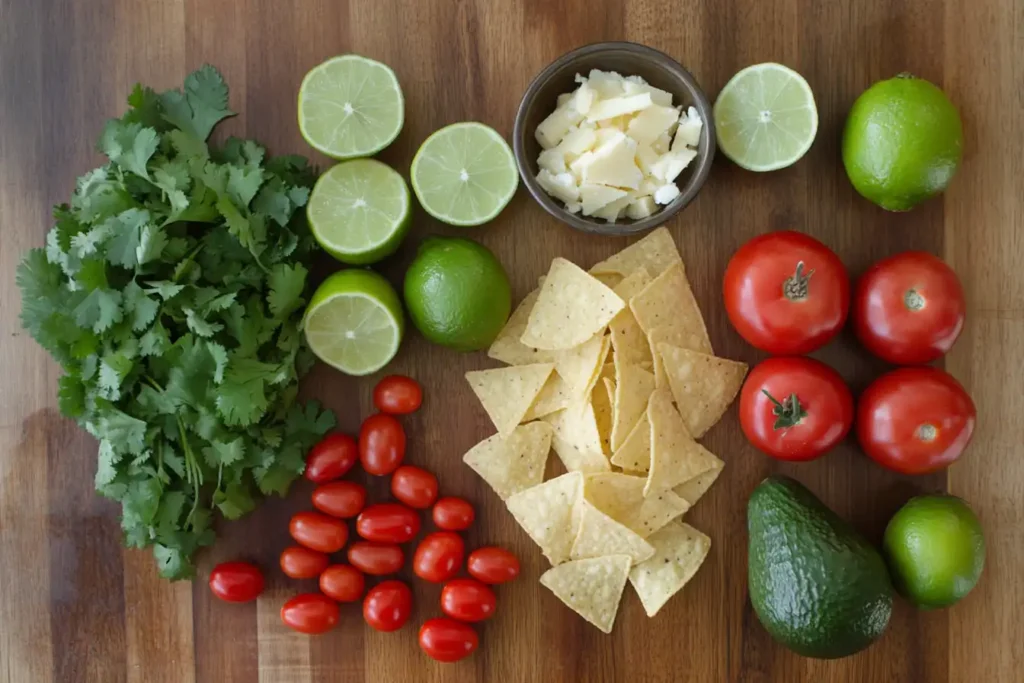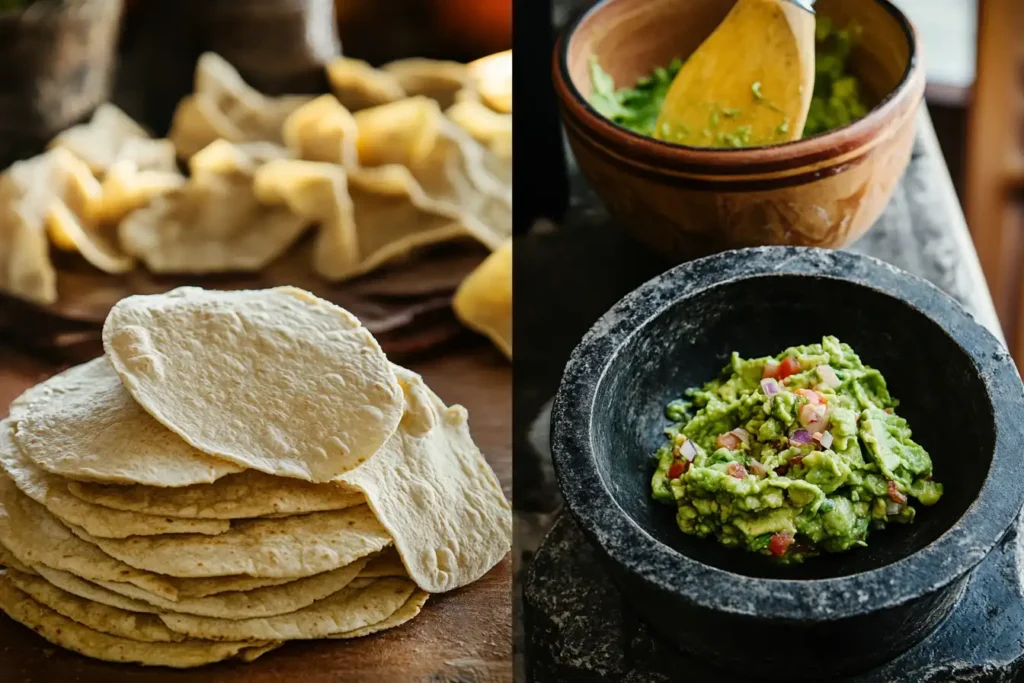Mexico boasts a rich culinary heritage, vibrant flavors, and a knack for bringing people together through food. One of the most celebrated traditions within Mexican cuisine is the botana. But what is a botana exactly? At its core, a botana is more than just food; it’s an experience that blends social gatherings, diverse flavors, and cultural heritage into one delicious concept. In this article, we’ll delve into the world of botanas, exploring their origins, cultural significance, and how they differ from other snacks like nachos. From traditional recipes to preparing them at home, we’ll cover it all to give you a deeper appreciation for this delightful part of Mexican culture.
Introduction to Botana
Understanding Botana: A Mexican Culinary Tradition
A botana isn’t just a snack; it’s a window into Mexico’s heart and soul. These appetizers, often served during casual get-togethers or festive events, embody the vibrant spirit of Mexican cuisine. Whether it’s a gathering of close friends or a lively fiesta, botanas are there to make everyone feel welcome.
Derived from the Spanish word “botar,” meaning “to throw,” the term suggests the light-hearted, relaxed nature of these finger foods. Their preparation stands out due to the creativity involved. Unlike hastily thrown-together snacks, cooks carefully curate botanas, offering a range of flavors from savory to spicy and everything in between.
Definition and Meaning of Botana
So, what exactly is a botana? In essence, the term describes a wide array of Mexican appetizers or small dishes, similar to tapas in Spain. People share and savor these dishes in a communal setting, often pairing them with drinks such as beer, tequila, or refreshing aguas frescas. The beauty of a botana lies in its diversity. It can be as simple as sliced fruits sprinkled with chili powder or as elaborate as chiles rellenos.
Moreover, Mexican hospitality deeply roots itself in botanas. Offering guests a plate of botanas is a way of saying, “Welcome to my home, enjoy!” It’s an act of generosity and warmth, reflecting the essence of Mexican culture.
Historical Origins of Botana in Mexican Culture
The history of botanas dates back to ancient Mexican traditions, where food was an essential part of social and ceremonial gatherings. Indigenous communities would serve small dishes made from locally sourced ingredients like maize, beans, and chili. The arrival of the Spanish brought new flavors and cooking techniques, which blended seamlessly with indigenous recipes to create the modern-day botana.
Interestingly, the rise of cantinas in the 19th century played a significant role in popularizing botanas. These establishments often served complimentary botanas to patrons ordering drinks, a practice that remains alive in some parts of Mexico. Over time, these humble beginnings evolved into a culinary art form, with chefs and home cooks alike experimenting with flavors and presentations.
The Role of Botanas in Social Gatherings
In Mexican culture, food is more than sustenance—it’s a way of bringing people together. And botanas are at the heart of this tradition. People typically serve them at celebrations like birthdays, weddings, and even casual Sunday afternoons with family.
What makes botanas special is their ability to foster connection. Imagine a table filled with colorful plates of chips and guacamole, spicy peanuts, tangy ceviche, and cheesy quesadillas. People gather around, chatting, laughing, and sharing stories as they reach for another bite. This communal aspect is what sets botanas apart from other appetizers—they’re as much about the experience as they are about the food itself.
Types and Variations of Botanas
Exploring Diverse Botana Varieties
The diversity of botanas is one of their most exciting features. From savory to sweet, spicy to mild, there’s a botana to suit every palate. In Mexico, the sheer variety reflects the country’s rich regional cuisines and creative use of local ingredients.
Classic botanas include everything from crunchy tortilla chips served with freshly made guacamole to sizzling alitas (chicken wings) coated in tangy sauces. However, the offerings don’t stop there. Think of spicy nuts, flavorful ceviche, or even small portions of traditional dishes like chicharrones (fried pork rinds) served as snacks. Each type of botana brings something unique to the table, ensuring that no gathering is ever dull.
Traditional Botanas Across Different Mexican Regions
Mexican regions boast distinct botana styles influenced by their culinary traditions. In Veracruz, seafood reigns supreme, so you’ll often find ceviche and cocktails de camarones (shrimp cocktails) served as appetizers. Meanwhile, in Oaxaca, where cheese and corn take center stage, dishes like tlayudas—crispy tortillas topped with beans, cheese, and meat—are common.
Northern Mexico features hearty botanas, like carne seca (dried beef) and queso fundido (melted cheese often served with tortillas). Central regions may favor simple options such as roasted peanuts with lime and chili or quesadillas fritas filled with chicharrón prensado. The interplay of local ingredients and traditional preparation methods ensures that every bite is a delightful exploration of Mexican culture.
Popular Ingredients Used in Botanas
The ingredients used in botanas reflect Mexico’s love for bold, fresh flavors. Corn serves as a staple and often appears in tortillas, elotes (grilled corn), or totopos (chips). Beans and cheese frequently make an appearance, lending creamy textures to many dishes.
Chilies—both fresh and dried—are indispensable, adding spice and depth to snacks like pepinos con chile (cucumbers with chili powder) or chile relleno bites. Meats like pork, chicken, and shrimp are also prevalent in more substantial botanas. Additionally, lime, salt, and herbs like cilantro are often used to elevate the overall flavor profile, ensuring that each dish bursts with freshness.
Vegetarian and Vegan Botana Options
For vegetarians and vegans, the world of botanas is just as exciting. Simple dishes like guacamole and salsas served with tortilla chips are vegan by nature. Other options include roasted vegetables, black bean dips, or even tacos de nopales (cactus tacos).
Creative cooks have developed plant-based versions of popular dishes, substituting meat with mushrooms or jackfruit for tostadas and empanadas. Vegan cheese or crema can be used in recipes that traditionally call for dairy, ensuring that everyone can enjoy these delightful snacks. The adaptability of botanas makes them a fantastic choice for mixed-diet gatherings, where inclusivity is key.
Botana vs. Nachos: Understanding the Differences
Distinguishing Between Botana and Nachos
At first glance, botanas and nachos might seem interchangeable—they’re both Mexican snacks, right? Well, not quite. While nachos are a specific dish made from tortilla chips topped with cheese, beans, and sometimes meat, botanas are a broad category of appetizers that can include everything from fruits to seafood.
Nachos are structured, whereas botanas are diverse, encompassing countless variations across flavors, textures, and ingredients. Understanding this difference opens up a world of culinary possibilities.
Key Differences in Preparation and Presentation
When it comes to preparation, nachos are relatively straightforward: tortilla chips layered with toppings and baked or served warm. In contrast, botanas encompass a wide array of cooking methods, from frying and grilling to marinating and assembling raw ingredients.
Presentation also sets them apart. Nachos are typically served on a single platter, often shared by a group. Botanas, however, can be presented as individual portions or an assortment of dishes laid out buffet-style. This makes botanas ideal for more elaborate gatherings where variety is essential.
Flavor Profiles and Ingredient Variations
Nachos generally revolve around a base of cheese and beans, delivering a rich and savory flavor. While tasty, they lack the variety found in botanas, which can be spicy, tangy, sweet, or savory depending on the dish.
For instance, a plate of botanas might include citrusy ceviche, smoky grilled meats, or crispy plantains dusted with sugar. The possibilities are endless, and each dish offers a distinct taste experience, unlike the relatively uniform profile of nachos.
Cultural Significance and Consumption Occasions
Nachos, while enjoyed internationally, don’t carry the same cultural weight as botanas in Mexico. Botanas are deeply ingrained in Mexican traditions, served during holidays, family gatherings, and casual evenings alike. They foster community and connection, making them more than just food.
Nachos, on the other hand, are more associated with game nights or casual dining, particularly in the U.S. Although delicious, they don’t have the rich history or versatility of botanas, highlighting the cultural importance of the latter in Mexican cuisine.
Preparing Botanas at Home
How to Create Authentic Botanas in Your Kitchen
Making botanas at home is easier than you might think. With a bit of creativity and the right ingredients, you can recreate these iconic snacks to wow your family and friends. Whether you’re hosting a party or just want a delicious evening treat, preparing botanas is a fun way to bring a piece of Mexico into your kitchen. Let’s dive into the essentials, techniques, and tips to perfect this culinary art.
Essential Ingredients and Tools for Botana Preparation

To create authentic botanas, start by gathering the key ingredients. Staples like corn tortillas, fresh vegetables, beans, cheese, and meats (or plant-based alternatives) form the foundation. Additionally, you’ll want spices like chili powder, cumin, and paprika to add that signature kick. Don’t forget limes, cilantro, and avocados for garnishes that provide balance and freshness.
As for tools, you’ll need a sturdy skillet or griddle for frying and grilling, a sharp knife for precision slicing, and a blender or molcajete for making dips like guacamole or salsa. Having small serving plates or bowls on hand is helpful for presenting your creations. For a more traditional touch, consider using clay dishes or woven baskets.
Step-by-Step Guide to Making Classic Botanas

- Choose Your Base: Decide on your botanas. Will it be tortilla chips, mini tacos, or perhaps a mix of tostadas and sopes?
- Prepare the Ingredients: Chop fresh produce, marinate proteins, and cook beans or rice. For lighter options, slice fruits and sprinkle them with chili powder.
- Cook and Assemble: Grill or fry your base, then layer it with toppings. For example, on a tostada, add a layer of refried beans, shredded lettuce, cheese, and a drizzle of crema.
- Season Generously: Mexican cuisine thrives on bold flavors, so don’t shy away from spices, lime juice, and herbs.
- Serve Immediately: Arrange the botanas on a colorful platter and bring them to the table while they’re still fresh and warm.
Tips for Serving and Pairing Botanas with Beverages
Presentation is everything when it comes to botanas. Use vibrant plates or rustic wooden boards to make your snacks visually appealing. Arrange different types of botanas together for variety and garnish with fresh herbs or lime wedges.
Pairing botanas with beverages is a game-changer. A cold beer or a classic margarita complements spicy snacks like chicharrones and alitas. For lighter options like ceviche, try a crisp white wine or a citrusy agua fresca. The key is to balance the flavors, ensuring every bite is complemented by your drink of choice.
Frequently Asked Questions about Botanas
Addressing Common Inquiries about Botanas
It’s no surprise that botanas spark curiosity. With their unique blend of flavors, history, and cultural significance, there’s a lot to uncover. Here, we answer some of the most frequently asked questions about these beloved Mexican snacks.
What Are Botanas in Mexico?
Botanas in Mexico refer to a diverse array of appetizers or snacks served during social gatherings. They range from light dishes like fruits with chili powder to more substantial offerings like tacos dorados or queso fundido.
These snacks are a staple at events such as family get-togethers, cantina outings, or celebrations. They’re not only a treat for the taste buds but also a reflection of Mexico’s vibrant culinary culture.
What Is the Meaning of Botana?
The term “botana” is derived from the Spanish word “botar,” meaning “to throw.” It symbolizes the casual, communal nature of these snacks, often “thrown together” to accompany drinks or fill the gap between meals.
However, there’s nothing haphazard about the quality or thought that goes into making a botana. Each dish reflects careful preparation and a deep love for flavors that bring people closer together.
What Is the Difference Between a Botana and a Nacho?
The primary distinction lies in scope. Nachos are a specific dish—tortilla chips topped with melted cheese, beans, and optional extras like meat or guacamole. Botanas, on the other hand, encompass a broad category of appetizers that includes nachos but extends far beyond them.
While nachos are structured and predictable, botanas offer endless variety, from seafood dishes to fresh fruit. This versatility makes botanas an integral part of Mexican cuisine.
What Is a Botana Plate?
A botana plate is a beautifully arranged assortment of snacks, often presented on a large platter. It typically includes a mix of crunchy, spicy, and savory elements, such as tortilla chips, salsas, nuts, and small tacos.
This style of serving is perfect for sharing, encouraging guests to sample a variety of flavors. A botana plate isn’t just food—it’s a centerpiece that brings people together for conversation and camaraderie.
Conclusion
Celebrating the Richness of Botanas in Mexican Cuisine
From their humble origins to their role in modern celebrations, botanas are a testament to the ingenuity and warmth of Mexican culture. These snacks are more than just appetizers—they’re an invitation to connect, share, and enjoy the simple pleasures of life. Whether you’re recreating them at home or savoring them in Mexico, botanas offer an authentic taste of a rich culinary tradition. Why not start exploring the world of botanas today? Your taste buds will thank you!


1 thought on “What is a Botana? Discover the Delicious World of Mexican Snacks”